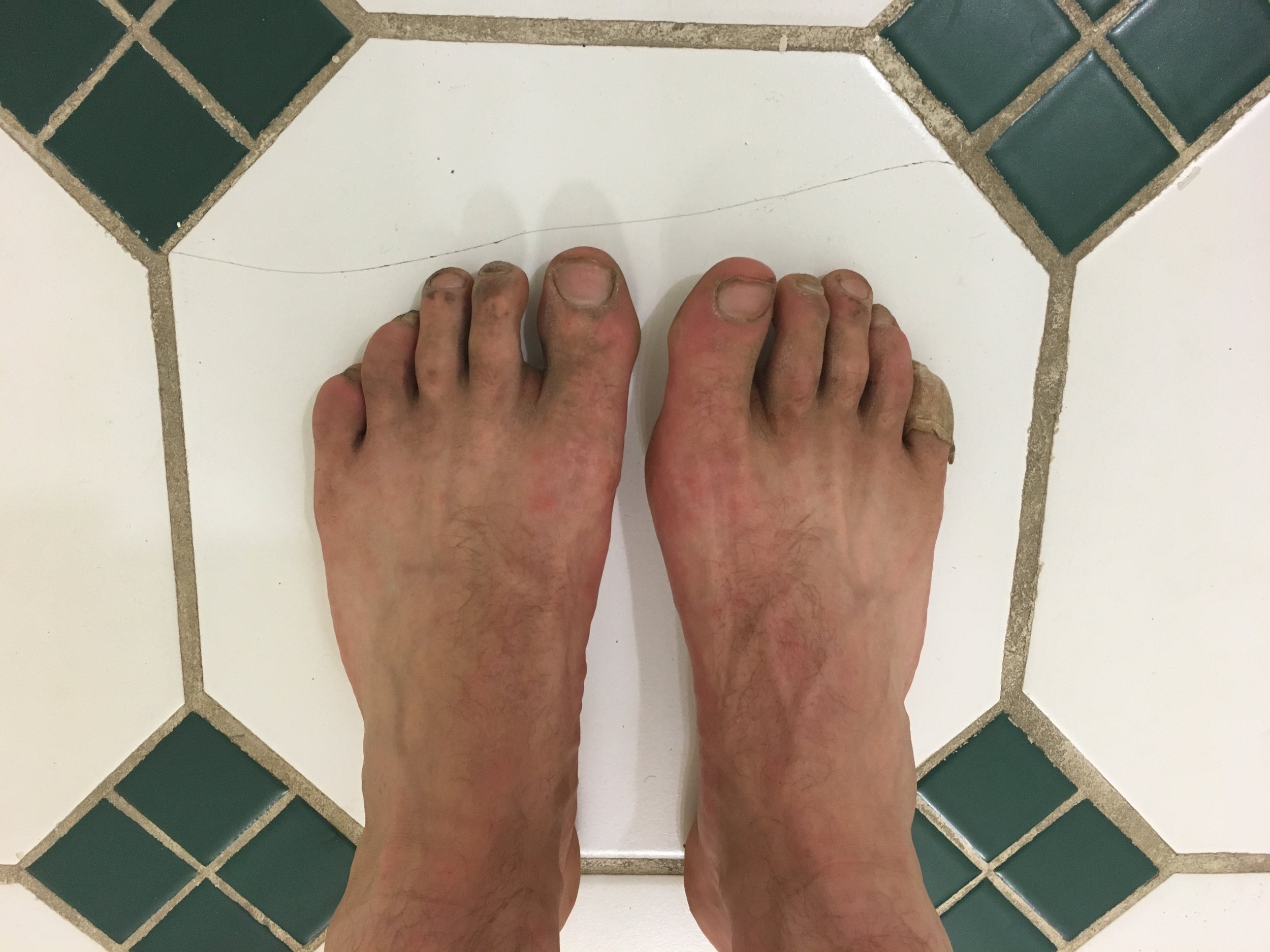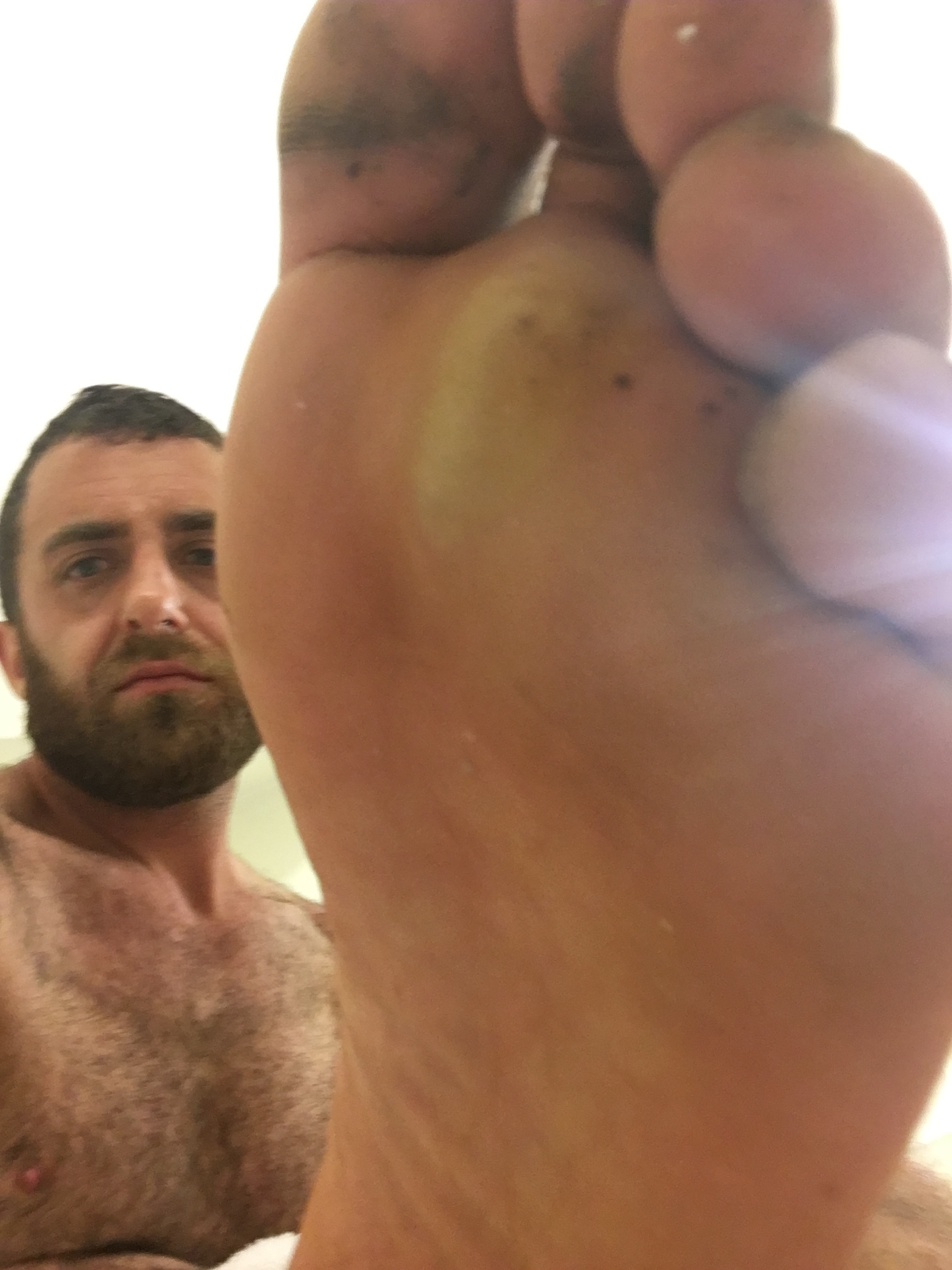Trouble
As the daylight faded at the Zion 100, I paced down a dusty gravel road atop Gooseberry Mesa. Having logged the last dozen miles looping back and forth on the 5,000ft mesa, I was happy to now be away from the cliffside and to be on a safe, downward-pitched road leading off the rear of the mountain. Despite my more stable ground, I was still in trouble.
Having run 50 miles over the past 12 hours on hard-packed desert clay and slick rock, the bottom of both of my feel were now blistered and swollen. They ached in my crumbling Hokas and each step sent white hot electric waves of pain up my tired legs. I had done what I could to prevent this—changed socks, avoided puddles, rested at each aid station, massaging my chronically crushed little toes, and as a last resort, popped Ibuprofen. Still, I was in this situation…again.
You see while running my last 100-miler—the aptly named IMTUF (Idaho Mountain Trail Ultra Festival)—I was stopped at mile 52 and for the same reason: wrecked feet. Was this going to be another failure? Another DNF?
When I first started running ultras back in 2010 I set a personal goal of earning ten buckles, the awards given to 100-miler finishers. Within a few years I earned finishes at Lumberjack, Cascade Crest (2x) and Southeast Washington’s Badger Mountain 100. At the time I was on a roll. However, my last completed 100 was now almost three years ago. Zion was supposed to restart my mission towards ten. Unfortunately with every step further right now my body told me I would have to wait for my fifth piece of runner "jewelry". Crap!
My troubles didn’t start atop Gooseberry Mesa. I knew something was off miles earlier.
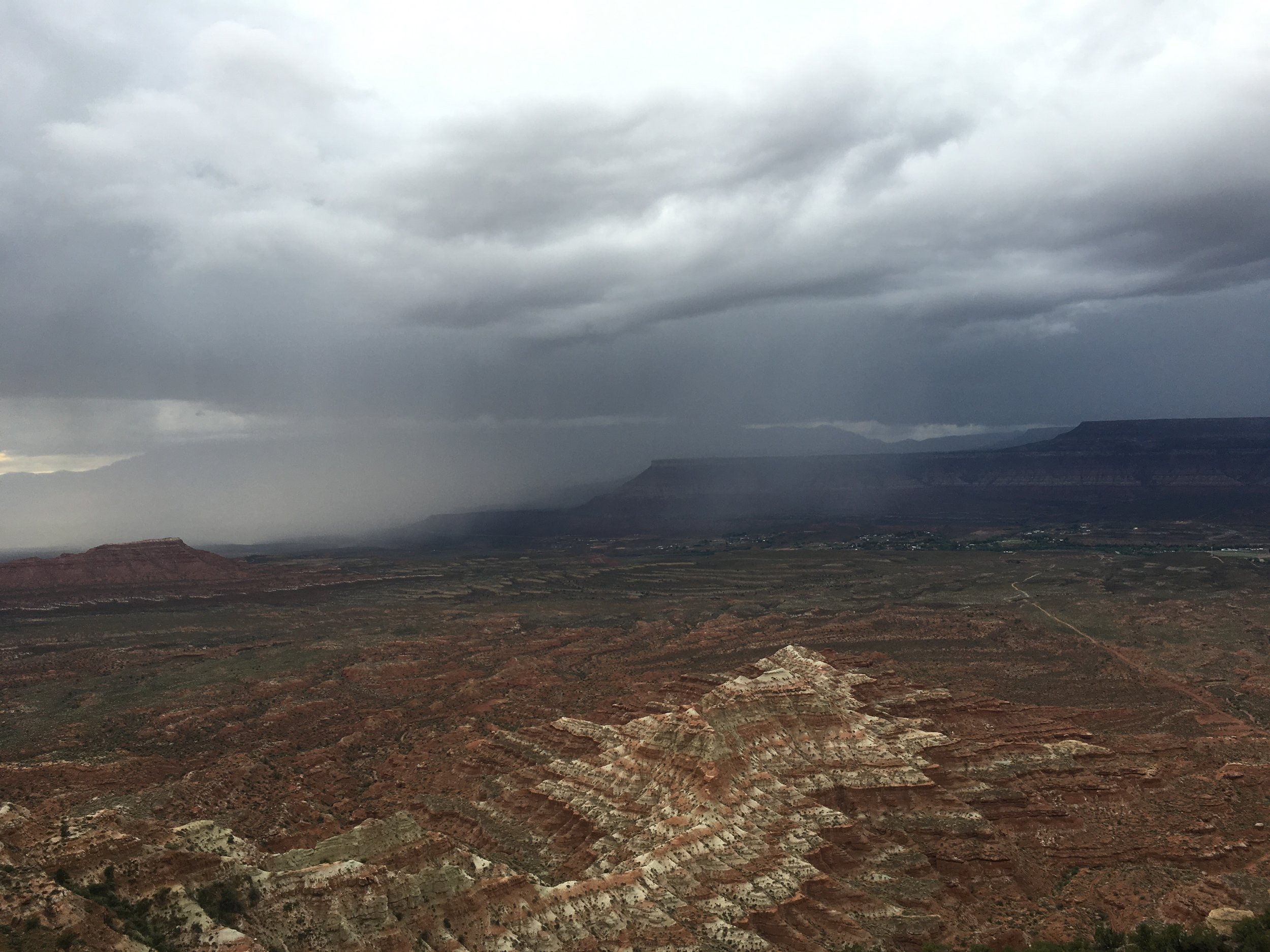
Zion 100 is a race held in the sweeping desert landscape of Hurricane, Utah, just outside of Zion National Park, and a few hours drive from Vegas. I had traveled here with my buddy Nick, a wickedly-fast Ohio transplant who now trained by doing 4x Mt. Si climb repeats and other brutal training outside of Seattle. The day before the race he and I hiked the surprisingly intense Angels Landing in Zion National Park. Clinging up chains bolted to the cliffside, we skirted past crowds of visiting students out on spring break. Nick and I drank in views of the arid desert, but also pondered what the next day's weather would bring.
Weather
For the two weeks prior the race director Matt Gunn and his team had messaged runners warning us about a weather forecast growing worse by the day and even offered to transfer anyone's registration to next year if desired. Rare desert rain was expected with the potential to turn clay dirt hills into dangerous vertical slip-and-slides, requiring course-rerouting or worse, event cancellation. Nick and I just put our hope in the gods and kept our race plans for Zion. The evening before the race I went to bed early at our AirBNB in Huricane, Utah, just a town over from the race start. Fingers crossed for tomorrow. And shoes laces bowed for luck.
On race morning we woke early and began getting ready. I didn’t tell Nick that my legs felt dead, still sore from the Angels Landing climb the night before. Bad juju. It was 4am and instead of feeling energized and excited for an outing in the hills, I felt depleted. Knowing that things can change throughout a day of ultra running I just went through my normal routine: coffee, clothes, car, bus, race start. Ok, let’s do this.
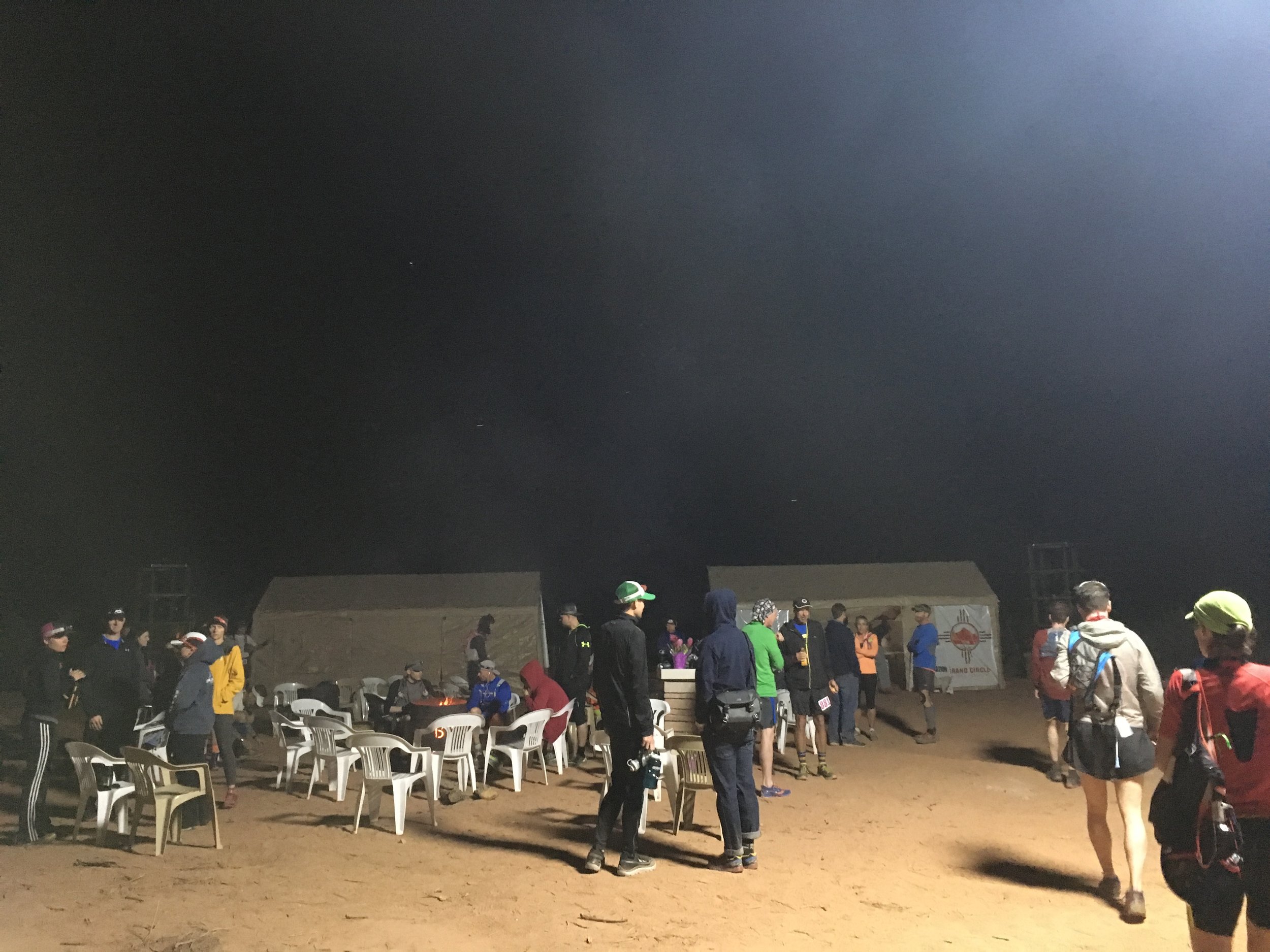
It's Go Time
No briefing in the morning. The course had been explained by the race director the night prior. At a hair past 6am, Nick, myself and a few hundred other runners headed out into the darkness, a mixture of 100-mile and 100k runners. And so we ran and climbed.
For the race I wore my Petzl headlamp strapped to my forehead, an Ultimate Direction pack on my back and size 12 Hokas on my feet. The morning desert air was cool and the sky was a mix of clouds and with a few rare patches of blue. While rain was forecast, the race director said “There’s only a 40% chance. We just don’t know if that means there’s a 4 in 10 chance of precipitation or that 40% of the area will get hit.” Yikes.
The first hill up was the joyous sounding Flying Monkey. I was a middle link in a chain of runners working up the climb. Just one step at a time, I slowly made progress on the climb. Our lamps painted a snake down the trail in the early morning light. Beautiful.
The first 15 miles went as expected. I watched my pace, made sure I drank plenty to counter the dry desert air and started to see miles tick by. None came easy as they normally should during the first section of a 100, but then again I just thought my body needed time to warm up after a long plane and car ride.
To everyone’s benefit, the rain held throughout the morning.
Things started to change for me around mile 18. As we climbed up a hill called guacamole, my body started complaining (and no, not avocado hunger pains). First I noticed my breath become slightly labored and then my legs started to ach. This isn’t uncommon for me during a race, but my suffering was coming WAY too soon, as in 60-miles-too-early. I can death march into a finish sure. I shouldn’t START a race feeling like this.
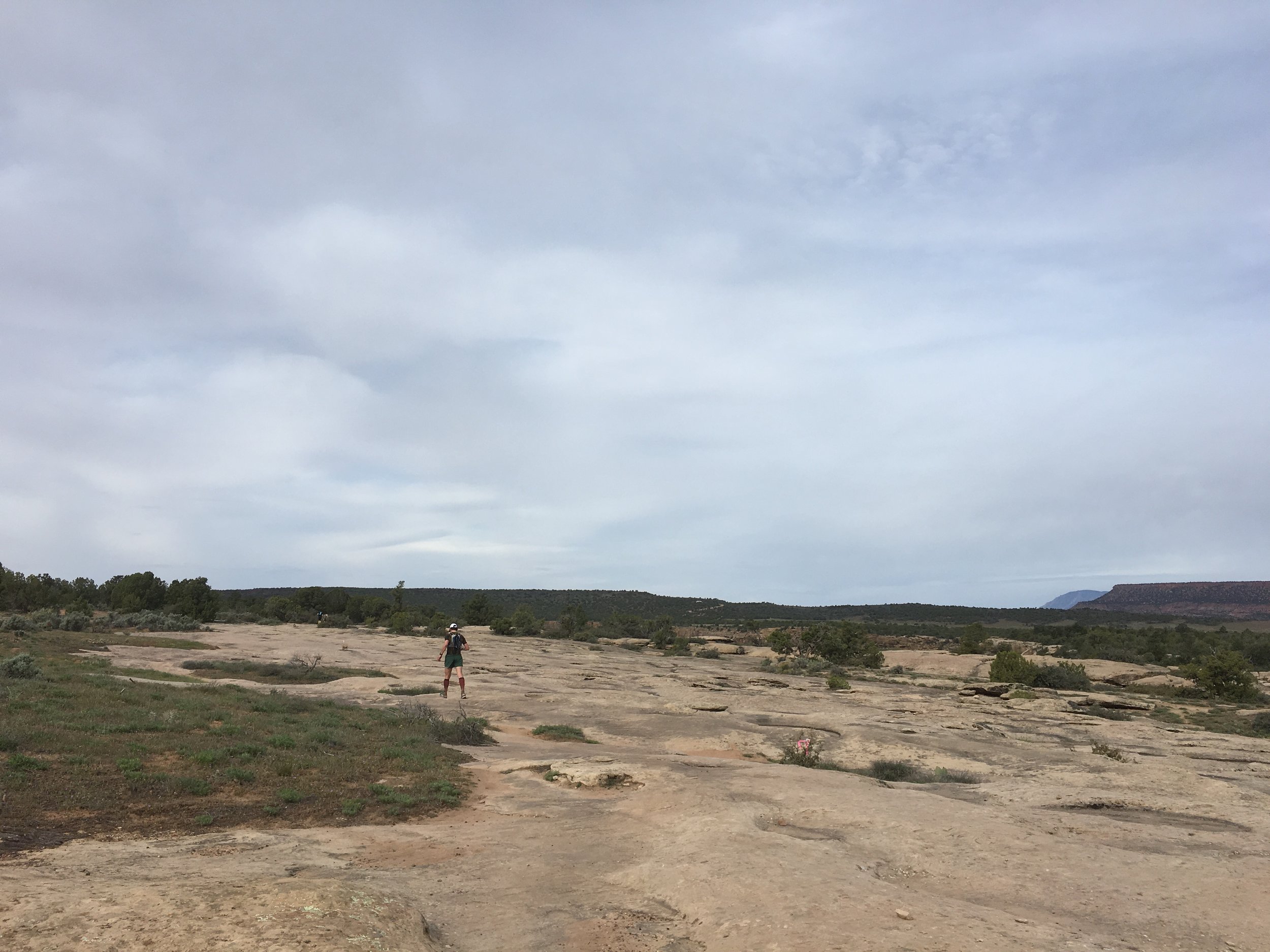
While I expected climbs to take effort, I was surprised by another challenge: slickrock. The guacamole section of the run involved running on this terrible surface, bounding up and down on stone as the trail wove around mounts of cooled lava. You can never get into a rhythm and while the cumulative elevation change wasn’t huge, I began to tire from high stepping constantly. This was less than 20% into the race and I was struggling to keep my chi in check. What was going on?
I hate guacamole
I trotted into the guacamole aid station with the best faker face on. "I’m ok", I told myself. "I’m just going through a moment", I thought with an effort to reassure. At the aid station a kind volunteer gave me ice that I tossed under my hat to cool my head (physically and figuratively). I rested for five minutes in a folding chair while refueling with electrolyte drink and cubed cantaloupe. Still not feeling revived, I banged down a half can of Mountain Dew. That should do SOMETHING?
I left the aid station at mile 25 and put in my headphones. I thought, “music and caffeine: DO YOUR MAGIC!” Finally, some momentum came to my legs and I picked up speed descending the hill. I could run again and leaned into the miles. Rihanna’s “Work” played on my shuffle as I bounded down the fire road. Finally I felt more in control. And it was perfect timing as I pushed towards the biggest climb of the day, the satirically-named Goosebump.
Was I reborn? We’ll see.
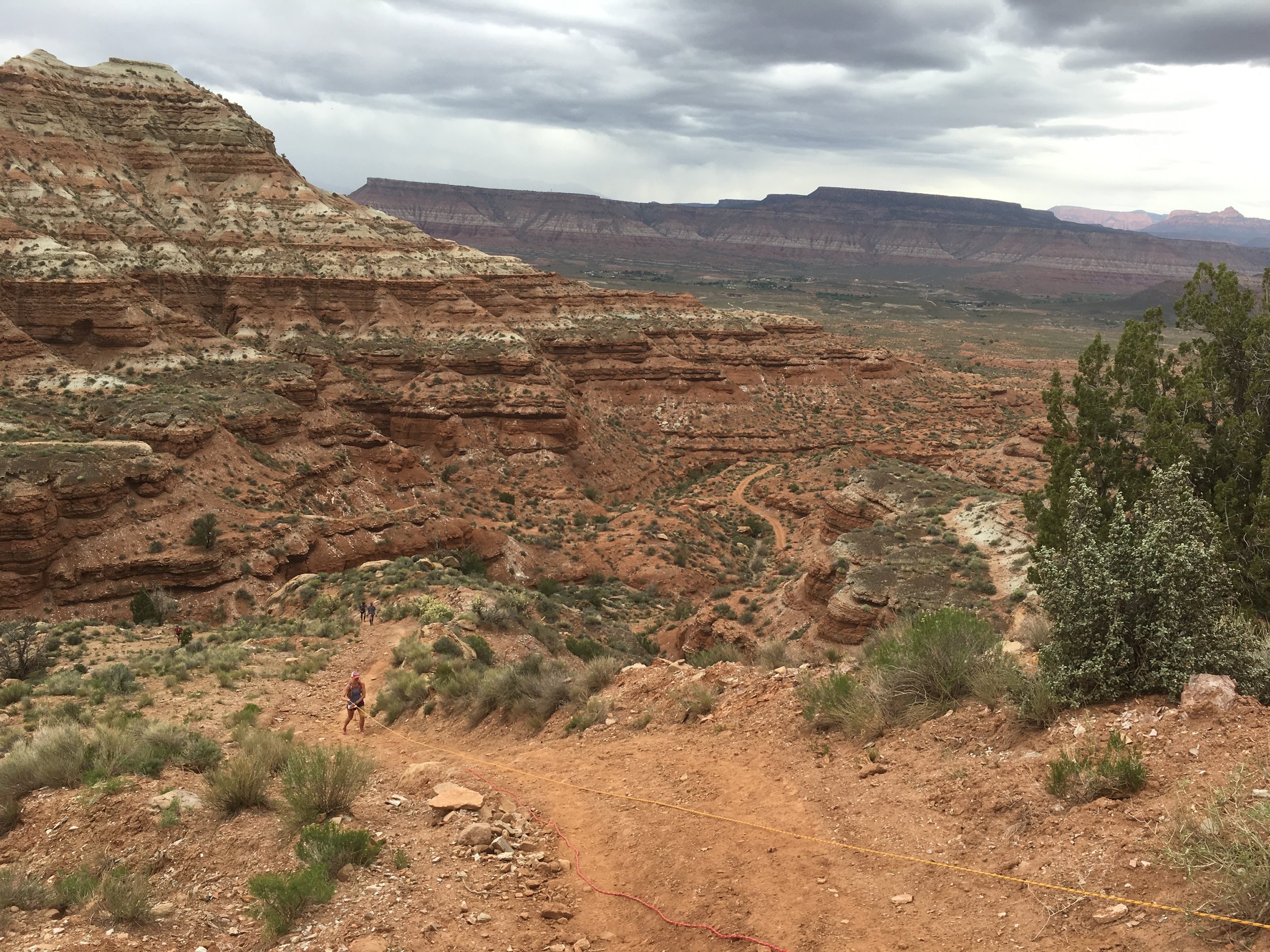
The ascent up Goosebump is steep, as in 2,000’ up in less than four miles. But honestly compared to the mindless loops on Guacamole, seeing progress in vertical feet climbed, and new views achieved wasn’t that bad. Mountains—I live for this shit!
The last section of the climb involves grabbing hold of fixed ropes that race organizers placed for protection. The lines were welcomed tools, but honestly optional in the dry conditionals. If it rained though the ropes would be the only way to get up, and more importantly, down. This could get scary.
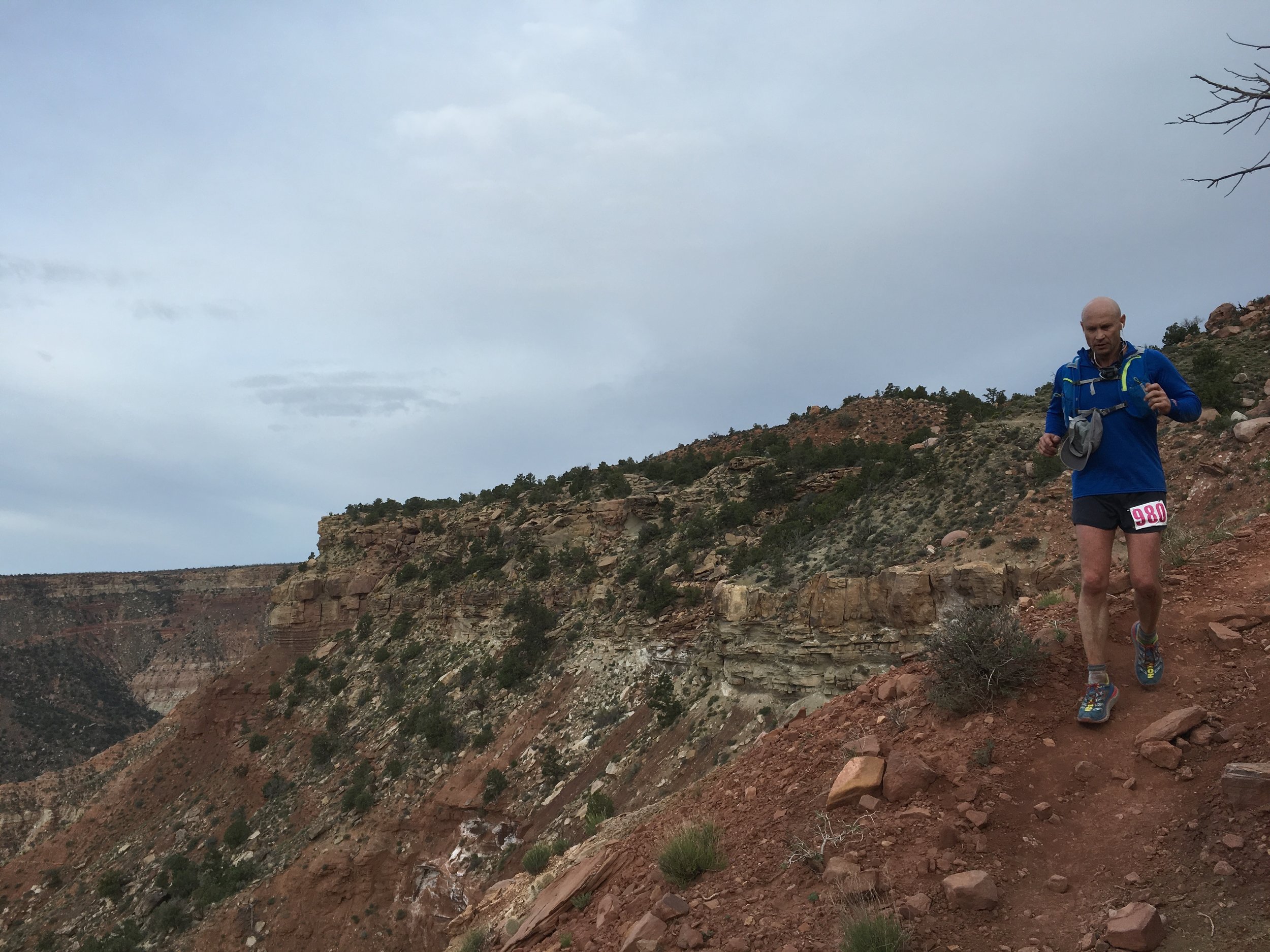
After grabbing food, water and massaging my feet at the Gooseberry aid station, I started my Goosebump loops. This is like Guacamole on steroids—more climbing and descending on slickrock and looping past sheer cliffs, all the while following faint white markings painted on the stone slabs. It was both a mental and physical challenge to make sure you were headed in the right direction. Once again, my body started giving me signals.
You’re tired. You’re unmotivated.
Your feet hurt even thought its just 40 miles into the race.
You aren't made for this. You should try golf instead.
I was my worst enemy.
After finishing two winding loops atop the mesa, the day was getting long. I refueled at the Gooseberry aid station, and headed out on a ten mile out-and-back to the "cemetery". Aptly named.
As I started down the dirt road, I waved at runners coming in from the opposite direction. I tried to put on a smiling face, but my feet were screaming. Blisters had sprung up on the front and rear of each foot meaning all I could do was walk, and gingerly at that. I had the energy and my legs felt ok, but my feet were a mess. This was IMTUF all over again.
I pushed myself two miles down the road promising myself that something would change. It didn't. After a few more minutes, I knew what I had to do. I turned and headed back to the aid station. I planned to drop from the 100-miler and instead finish the 100k course.
The wind kicked up and cold rain dropped from the dark clouds above for about 20 minutes. How fitting?
"This sucks!" I exclaimed for no one but myself to hear.
I put on my jacket, zipped up to my chin and cinched the hood tight around my face. Wasn't the desert supposed to be warm and dry?
Turning Around
On my return to the aid station, NW ultra runner Kevin Karr and I passed on the trail. Kevin looked a little tired, but his will was unyielding. I explained that I was dropping to the 100k.
"What? No, keep going!"
He encouraged me not to, but my mind was set. "I can't. I'm dropping. It's done."
With that Kevin pushed on towards the cemetery, while I reversed course to finish out the 100k course. I was disappointed with myself.
The end of the race was what you'd expect. Hard.
The descent down the Goosebump climb was expectedly steep. The run out to the Virgin Desert aid station was literally the longest eight miles I could imagine. I climbed up and down mountain bike trails with other 100k runners and made chit-chat to help the hours go by quicker.
Along the way I met Jim, a father from just outside of Chicago and we shared complains about how long the miles felt. From our rear a set of friends from California joined us their lights dancing in the darkness. The sun had set so we all wore headlamps and searched the landscape for aid station lights. Nothing.
Eventually we did get to Virgin Desert. After fueling up on soup and soda, my new Chicago friend and I headed back out into the darkness. The trail to the finish wove around a canyon and included plenty of cliffs to avoid. No time to doze off!
The Finish
We spent two miles on a fire road and then finally had another four on trail before weaving back to the race start/finish. Emotionally I was spent. While it was now past midnight, race organizers were still up. The generator hummed, powering the lights and inflated finish line arch. I crossed the finish with a few labored steps, then searched for a seat. After over 62 miles of mesa running, I was done both emotionally and physically.
And damn did my feet hurt.
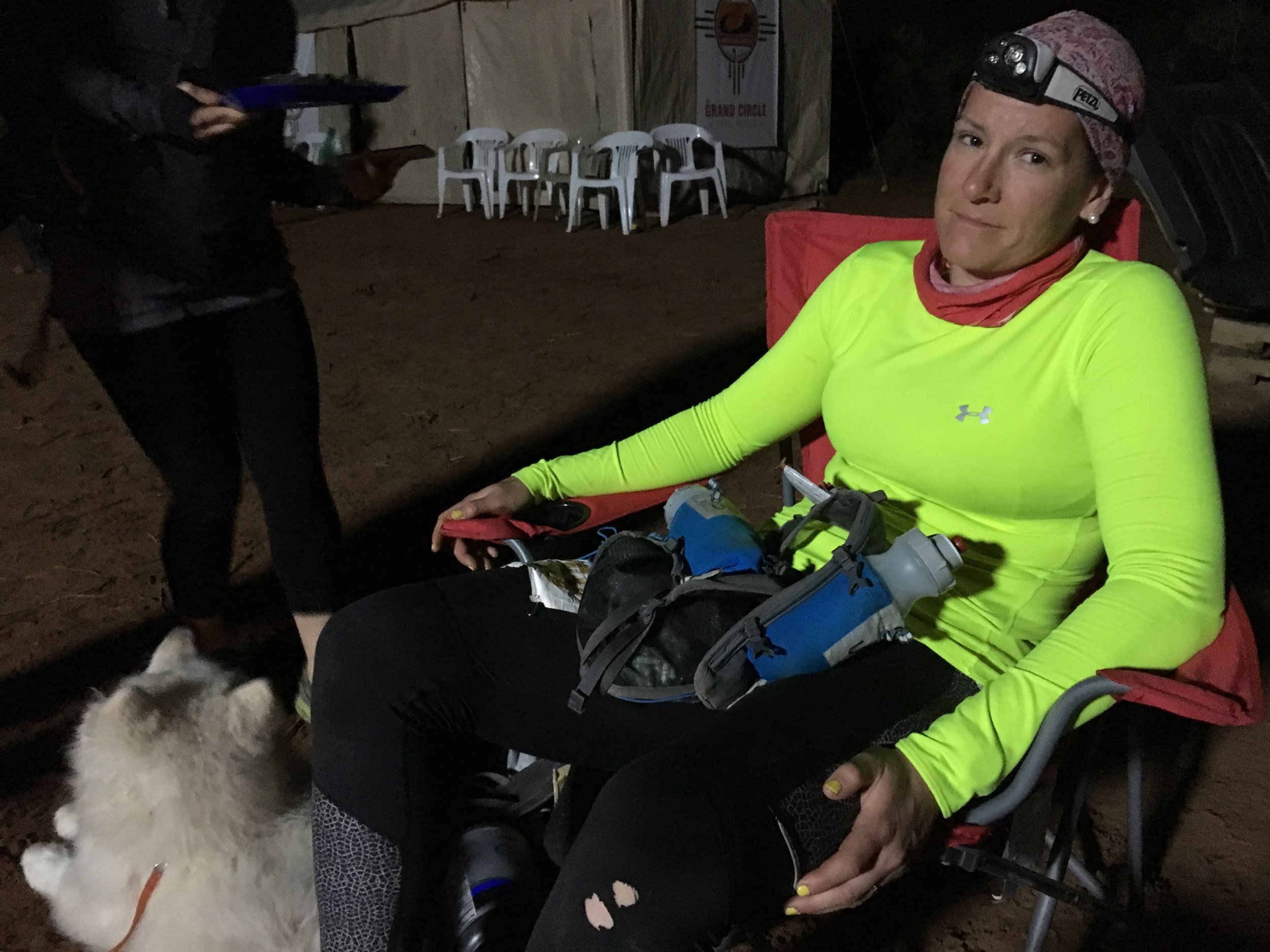
So, what did I learn?
- Figure out my feet. This means how I tape them, what socks I use and what shoes I lace up in. I can't keep beating my feet into bloody pulps and having them fail me 50% into a race.
- More 100s? I LOVE trail running. It is one of my favorite activities to do, and races lasting 30, 40 or 50 miles all still seem reasonable. But something happens when you aim for 100. It means that instead of suffering for maybe 10% of a run or race, I suffer for 40%. That's not actually something that I enjoy and can't say if its even worth it. Why not just have more fun, and forget my buckle goal? We'll see. I'll make a decision in a week or two.
- It's not always about elevation Both Zion races, the 100k or 100 miler, didn't have that much elevation gain. The 100 miler had less than 12,000' of climbing—nothing when it comes to ultras held in the Western U.S. And yet, it wasn't the big mesa climbs that got me, but the tiny up-and-downs that I found challenging. For my next race I'm going to explore the course description more to understand that the challenge isn't always vertical gain.
My next race on the books is the Beacon Rock 50k, a loved race and course on the Washington side of the Columbia Gorge. It's a race I've run before and enjoyed. Let's hope that I have a more successful run with less suffering. And yes, I'm buying new shoes.
